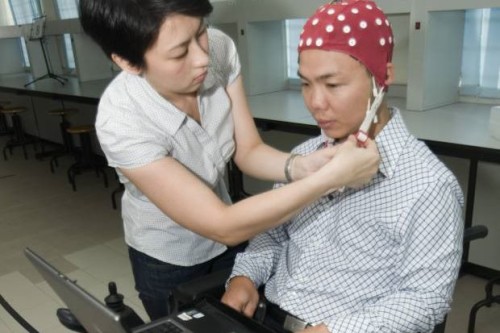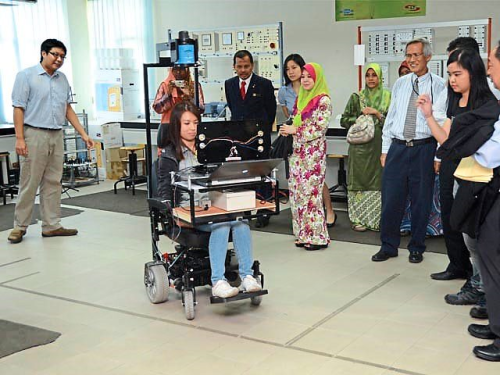The medical and healthcare sector will see a greater need for professionals in the biomedical field, since it is poised to grow and generate even more revenue in the years to come.
BIOMEDICAL engineers in developing countries have been in high demand because of the massive growth in the healthcare sector.
Graduates who are well-equipped with biomedical engineering knowledge play key roles in meeting challenges and making significant contributions in various healthcare related professions; for example, in clinical applications, manufacturing and production industry, medical act regulations, and research and development of medical devices.
The facts presented by the Health Ministry in 2012 show that there were 138 government hospitals and 220 private hospitals as well as many different clinics and home care centres in Malaysia.
A sum of RM23bil was allocated by the government to the healthcare sector in 2015 as operating and development expenditure.
With the promotion of medical tourism in Malaysia, the Malaysian-German Chamber of Commerce and Industry (MGCC) estimates that there will be around two million medical tourists by 2029 and this is expected to generate 10% of the annual revenue growth for the Malaysian economy.
To accommodate the huge numbers of medical tourists, hospitals are expected to recruit more professionals such as doctors, specialists, nurses and biomedical engineers.
Some high-technology medical equipment such as the computerised tomography (CT) scanner, magnetic resonance imaging (MRI) machine, operating theatre equipment and intensive care unit equipment, require professionally trained biomedical engineers to properly maintain the functionality and quality of the equipment.
The employment of biomedical engineers can help to reduce maintenance costs for the hospitals. Biomedical engineers can assist in setting up proper practices on usage and maintenance that would ensure good performance of the equipment parts for a longer lifetime and more hassle-free maintenance.
Development of the medical engineering industry requires the support of professional biomedical engineers.
A survey presented by the Selangor State Investment Centre Berhad indicated that the current estimated market value for Malaysian medical devices is RM3.7bil (US$1.2bil) which is only equivalent to about 1% of the total market in the United States (US).
The statistics indicate that there is still a large market share on medical devices that are unexplored in Malaysia.
Another survey conducted by the Association of Malaysian Medical Industries (AMMI) states that there are about 180 medical device manufacturers in Malaysia including some major foreign multinational corporations (MNCs).
They are involved in high value medical products such as orthopedic products, dialysers, surgical instruments, medical electrodes, and others.
It shows that the engineering-support industry in Malaysia is capable of producing quality products and solutions to meet the stringent requirements of the medical devices industry.
Some of them are for instance, sutures by Vigilenz Medical Devices Sdn Bhd, spinal implants and joint replacement products by Straits Orthopaedics (Mfg) Sdn Bhd and hospital beds by LKL Advance Metaltech Sdn Bhd.
With the growing national interest on quality medical services and production of support equipment, the role of biomedical engineers is expected to increase significantly.
Regulations
Regulatory affairs are always a must for ensuring the safety of medical devices.
In 2011, the Malaysian Parliament approved the Medical Device Act 2012 (Act 737). As part of the effort from the Malaysian government on regulating medical devices, the Medical Devices Bureau (MDB) was established in September 2005 to develop and implement the medical devices regulatory programme.
Under the Act, the MDB is given the authority to regulate the various ranges of medical devices including pre-market, placement on the market, post-market, usage and disposal.
The Malaysian medical devices regulatory framework endorsed by MDB is based on the global harmonisation trend as promoted by the Global Harmonisation Task Force, Asian Harmonisation Working Party and Medical Device Product Working Group of the Asean Consultative Committee for Standards and Quality and supported by the World Health Organisation.
Before the products are marketed, biomedical engineers are expected to carry out risk analysis and clinical evaluation at the design and development stage.
This is to ensure the parameters of devices are compliant with the safety standards and risk acceptance criteria.
For the post-market surveillance, with recognised engineering competency, the biomedical engineers are to conduct investigations in identifying and determining the root cause of the problematic medical devices and to provide advice and remedial action for improving the design of medical devices.
With the Act and with the relevant authorities in charge of certification of the medical equipment, we expect more biomedical engineers to provide support in these areas. In addition, biomedical engineers can opt for research and development.
A lot of clinical needs and patient-related problems require multi-disciplinary knowledge in order to develop sustainable and unique solutions to assist clinicians in providing an efficient and effective treatment to patients.
One common example is the treatment of cardiovascular disease that requires implantable devices such as a pacemaker or stent to restore the heart function.
The effort to guarantee the functionality, efficiency, biocompatibility and safety of the device before implantation, and after implantation, require knowledge and methods in engineering and biomedical science, which is exactly the scope of study in biomedical engineering.
Government incentives
The Malaysian government in fact, has given more than 50% tax allowance as incentives for research and development (R&D).
However, there is still not much funds allocated for R&D on medical devices despites calls from those in the medical industry.
In this aspect, academicians from universities who are aware of the clinical needs and inadequacies can take the lead in research and development of medical devices for improvements.
Universiti Malaya with another four public research universities have set up the biomedical engineering programme. Universiti Tunku Abdul Rahman (UTAR) has also established a biomedical engineering programme to ensure enough graduates are available to support the biomedical engineering and human resource requirements of the industry and for research.
Devices used in diagnosis, monitoring, and therapy are developed based on the principles and fundamentals of medical science and engineering, by biomedical engineers.
They can help develop diagnostic instrumentations and explore new materials to be used for implantation.
The current research strengths of Malaysian universities focus on the following fields: Prosthesis and orthosis, regulations, signal processing, tissue engineering, MEMS, cardiovascular devices, medical imaging, biofluid modelling , bioinformatics, brain-computer interface.
Another research topic for biomedical engineers to explore is rehabilitation especially for the benefit of the disabled population.
A total number of 277,509 disabled Malaysians with various disabilities had registered with the Department of Social Welfare and only a small percentage of them are employed in the public and private sectors.
Disabled people have less chances of contributing their abilities to the workplace.
Biomedical engineers should explore how to develop a technological solution and invent devices for disabled people to regain their physical body functions and how to improve their quality of life. By doing so, disabled people will rebuild their confidence and continue to contribute to national development. The integration of medical science and engineering to revolutionalise healthcare in the developing world is the duty of biomedical engineers.
According to the report published by the United Nations Economic and Social Commission for Asia and the Pacific (Unescap), Malaysia is predicted to have an ageing population by 2030, in which 15% of the populations will be the elderly.
With a growing elderly population and quality device servicing needs, a more sustainable healthcare technology solution is needed to cope with the high living cost.
Biomedical engineers can design and develop solutions to address these shortages of the current healthcare system. With the promising outlook, we can foresee that sustainable and affordable healthcare solution will be the next challenge for biomedical engineering to meet the demands of the transformation of Malaysia into a developed country in 2020.
Dr Tan Lee Fan is an Assistant Professor in Universiti Tunku Abdul Rahman’s Department of Mechatronics and Biomedical Engineering, while Lee Kong Chian is with the Faculty of Engineering and Science. This is a series of articles on Science, Technology, Engineering and Mathematics from Universiti Tunku Abdul Rahman.
source: http://www.thestar.com.my / The Star Online / Home> News> Education / Sunday – July 26th, 2015



